Firefox provides a lot of functionality available on menus, toolbars, and through add-ons. After a while, you may find that the amount of space left for display of the web pages has shrunk. You may have the menu bar showing, various toolbars, the tab bar, and maybe the Bookmarks bar.
There are many options for customizing the appearance of Firefox and minimizing the amount of “stuff” available at the top of the Firefox window. We will be discussing several extensions you can install and tips you can employ to expand your viewable web page space in Firefox.
First, we will show you a Firefox extension, called Tiny Menu, that can minimize the size of your Menu Bar.
To install Tiny Menu, select Add-ons from the Tools menu.
The Add-ons dialog box displays. Click the Get Add-ons button on the toolbar at the top of the dialog box. Enter “tiny menu” (without the quotes) in the search box and either click the magnifying glass or press Enter.
The Tiny Menu extension should be the first item in the list of results. Click on it and then click the Add to Firefox button.
The Software Installation dialog box displays. There may be a countdown on the Install button, depending on your settings. If so, when it is done, click the Install Now button.
NOTE: See our post, Easily Tweak Firefox Configuration Settings Using a Graphical Interface, for information about turning off the add-ons installation delay, if desired.
Once the installation is finished, you are returned to the Add-ons dialog box. You must restart Firefox to complete the changes. Click Restart Firefox.
If you have more than one tab open or more than one Firefox window open when you close Firefox, the Restart Firefox dialog box may display, telling you that Firefox will try to restore your tabs and windows when it restarts. If you don’t want to see this dialog box every time you restart Firefox, select the Do not ask next time check box so there is a check mark in the box. Click Restart.
When Firefox reopens, the Add-ons dialog box may automatically display again. If it doesn’t, select Add-ons from the Tools menu to open it. First, we will set the options for Tiny Menu. Find Tiny Menu in the list on the Extensions screen and select it. Click the Options button.
The Tiny Menu dialog box displays. In the Do NOT collapse these menus box, you can select the menus that you don’t want to collapse into a single drop-down menu. Also, if you want the Tiny Menu drop-down menu available in full-screen mode, select the Menu toolbar visible in full screen mode check box. You must restart Firefox for these changes to take effect. Once you are finished selecting your options, click OK.
NOTE: When we installed Tiny Menu in Firefox 3.6.13 in Windows 7, 32-bit, there was an initial problem with the Options dialog box. The OK and Cancel buttons were not fully visible. We rebooted the computer and that fixed the problem.
You are returned to the Add-ons dialog box. To close the dialog box, click the X button in the upper, right corner.
The Menu Bar is now condensed into a single, drop-down Menu containing all the menus from the Menu Bar that you chose to collapse.
If you chose not to collapse any of the menus on the Menu Bar, they display next to the Menu drop-down menu, as shown below.
Now that you have a minimized Menu Bar, you can combine the Menu bar with the Navigation Toolbar to save space. To do this, right-click on the Menu bar and select Customize from the popup menu.
The Customize Toolbar dialog box displays. You do not need to do anything on the Customize Toolbar dialog box, but it must be open to customize the toolbars and the Menu Bar. To move an item from the Navigation Toolbar to the Menu Bar, click and hold the mouse on the item.
Drag the item to the Menu bar and release the mouse button.
We moved all of the items from the Navigation Toolbar to the Menu Bar, so the Navigation Toolbar is now empty. To turn off the Navigation Toolbar, right-click on any toolbar or the Menu Bar and select Navigation Toolbar from the popup menu, so there is no check mark to the left of the menu item.
Once you are finished customizing the toolbars, you can close the Customize Toolbar dialog box. Click Done on the dialog box to close it.
The Menu Bar and the Navigation Toolbar now take up only one line at the top of the Firefox window.
Stay tuned for more ideas on how to expand your viewable web page space in Firefox.
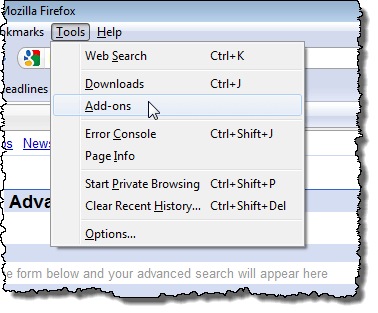
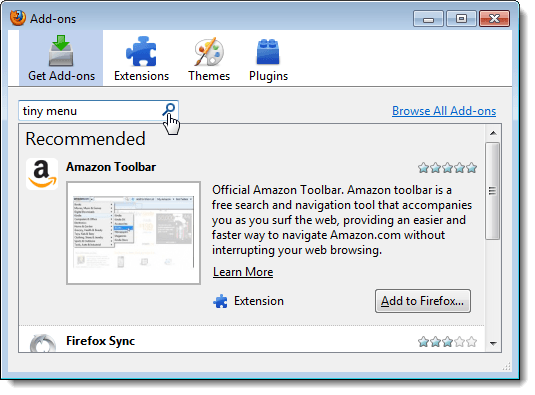
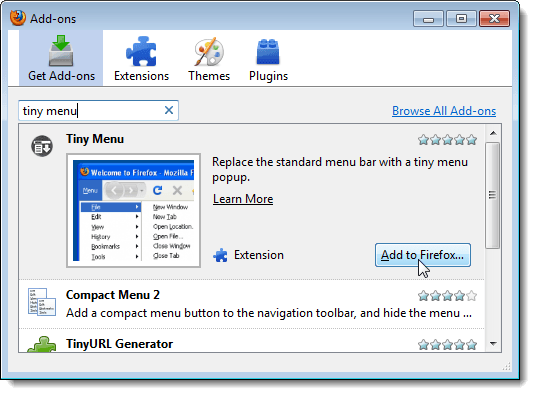
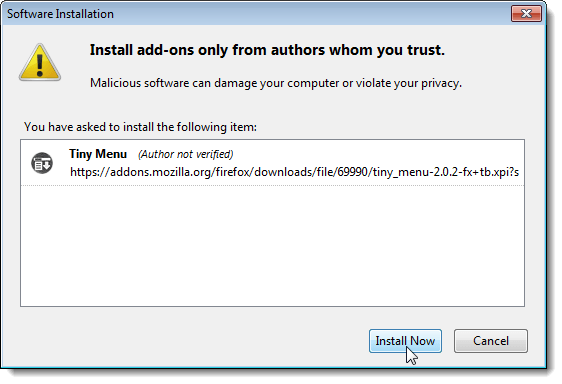
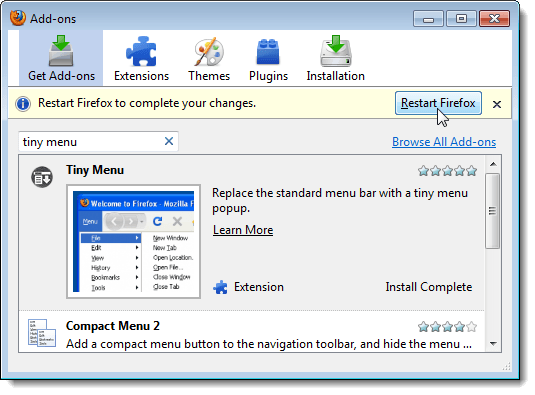

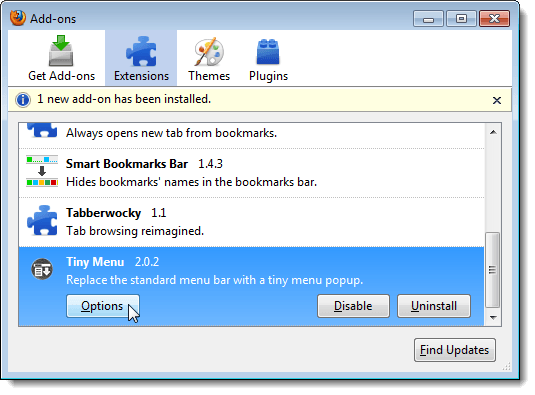
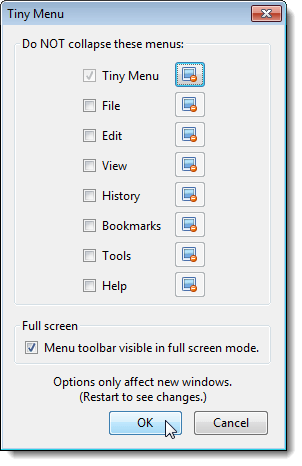
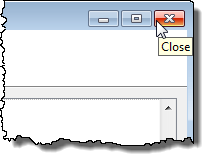
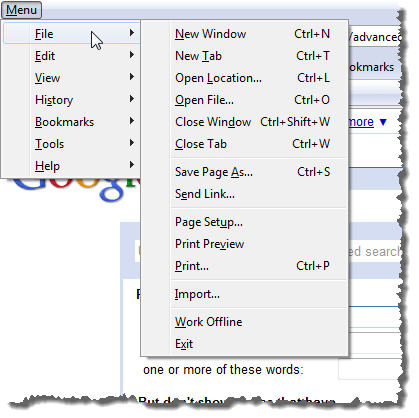
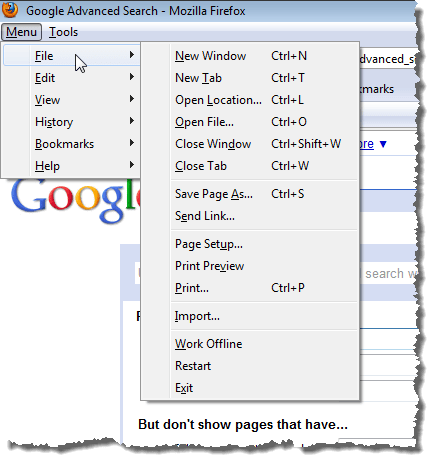
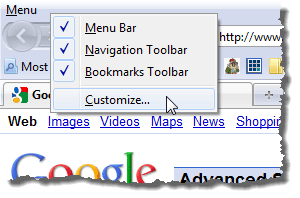
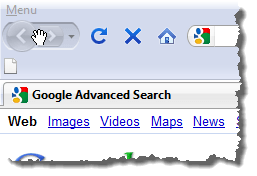
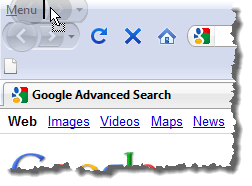
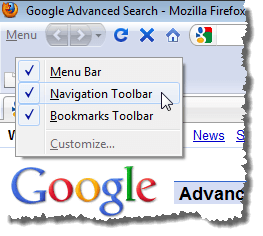
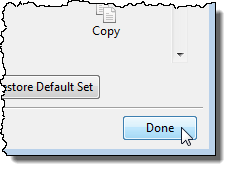
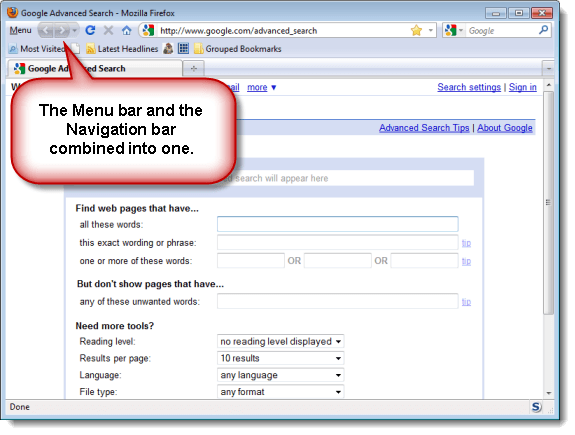

No comments:
Post a Comment